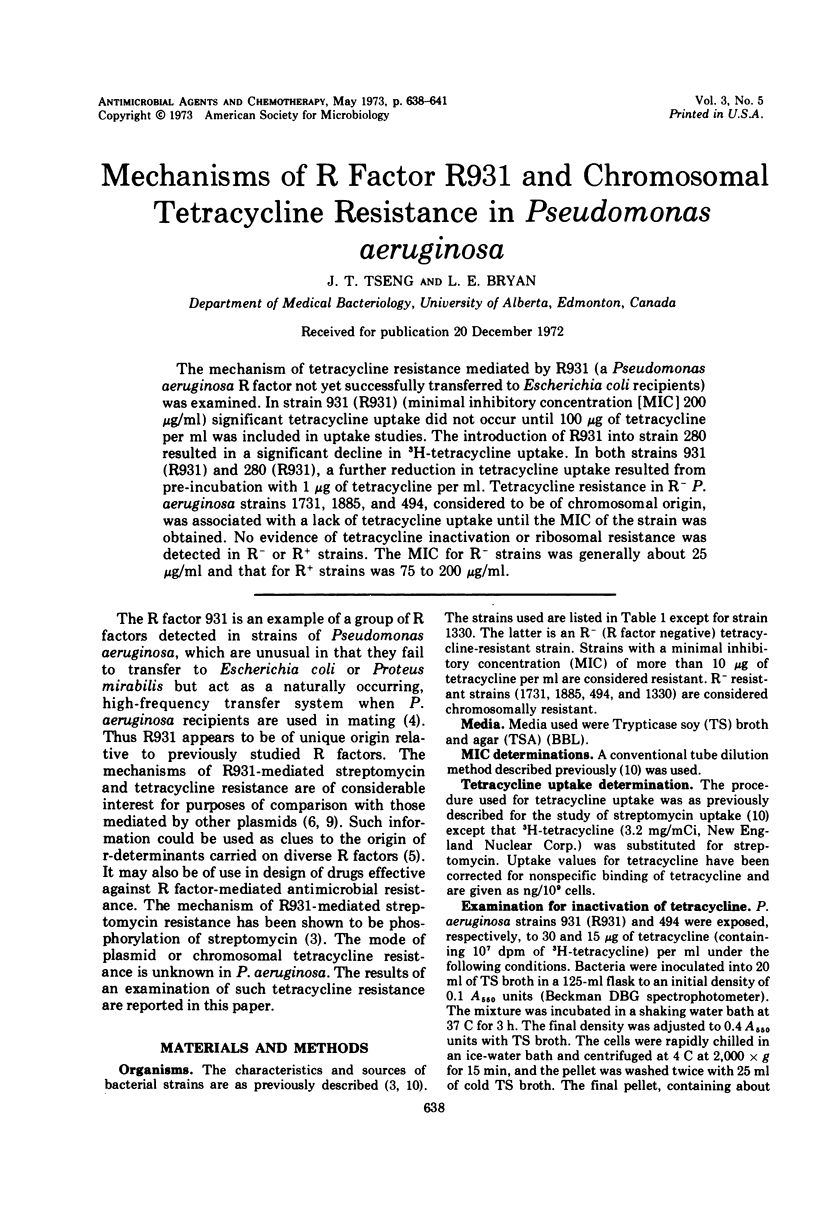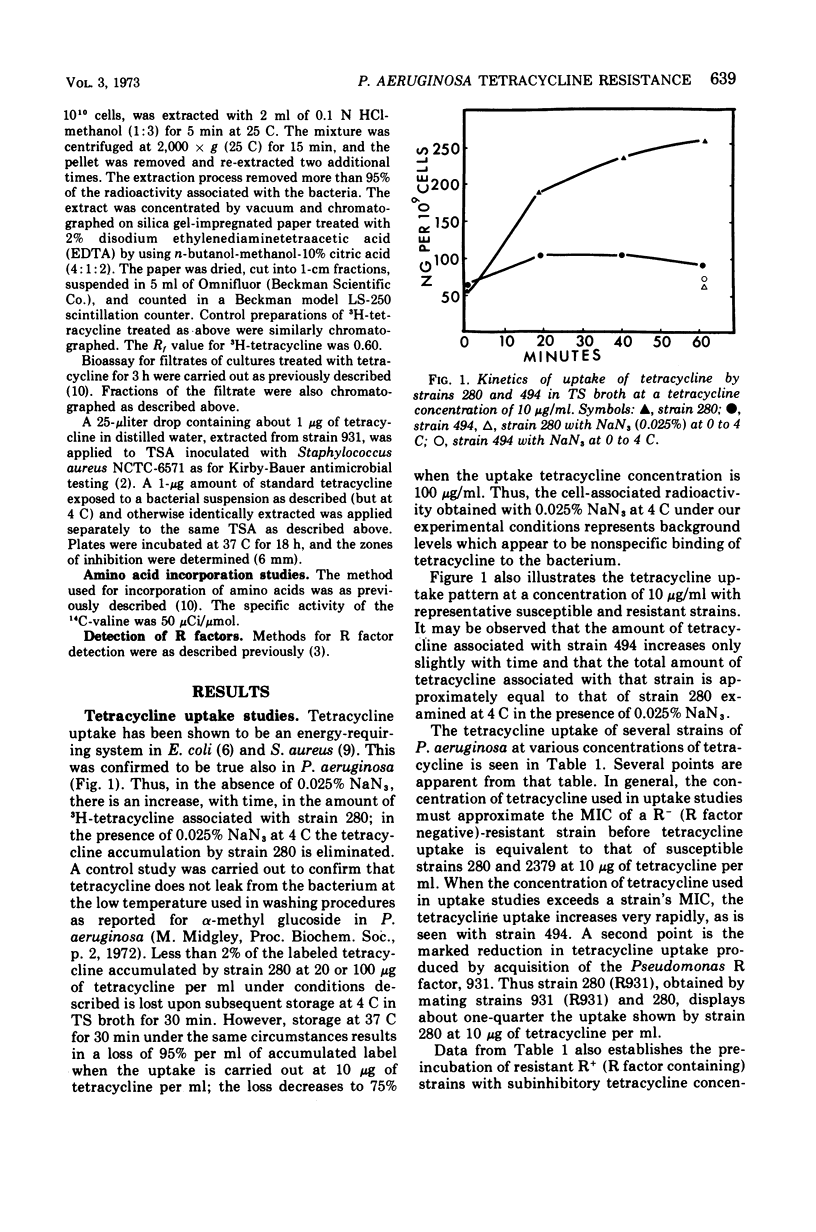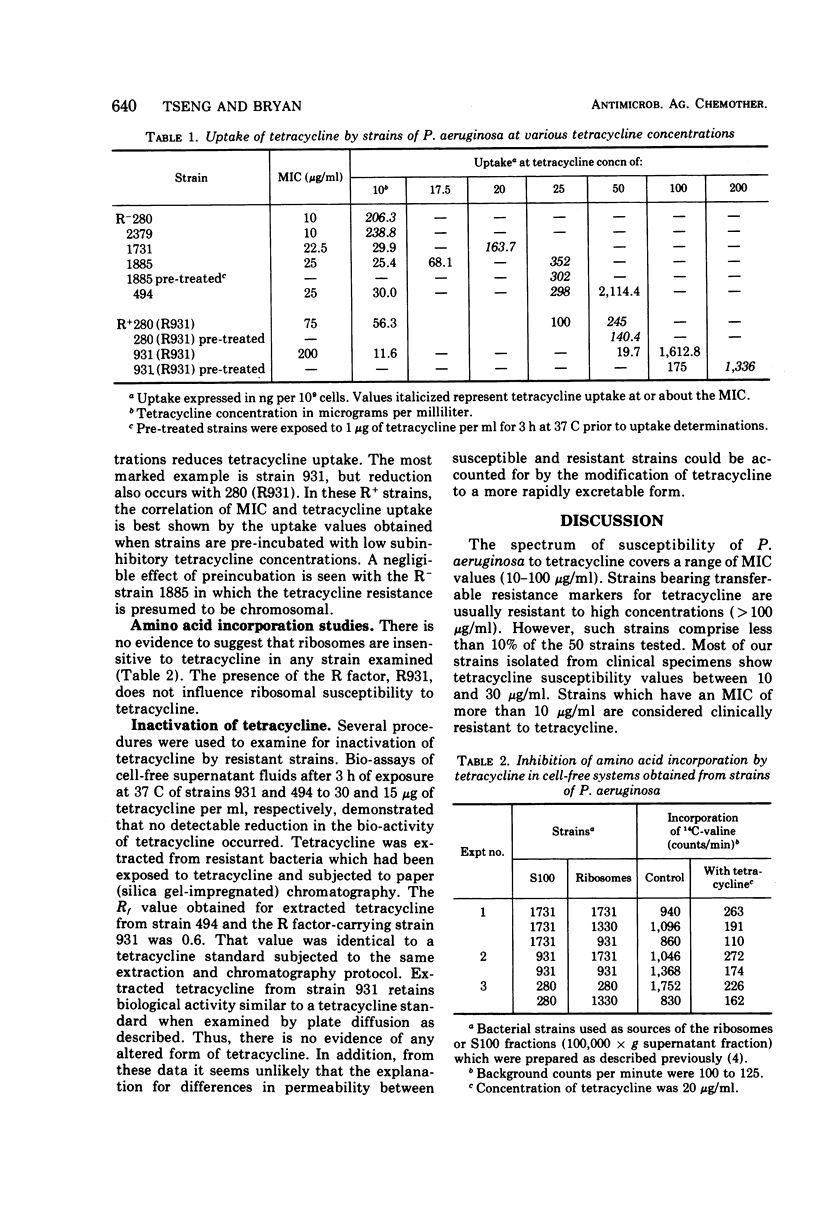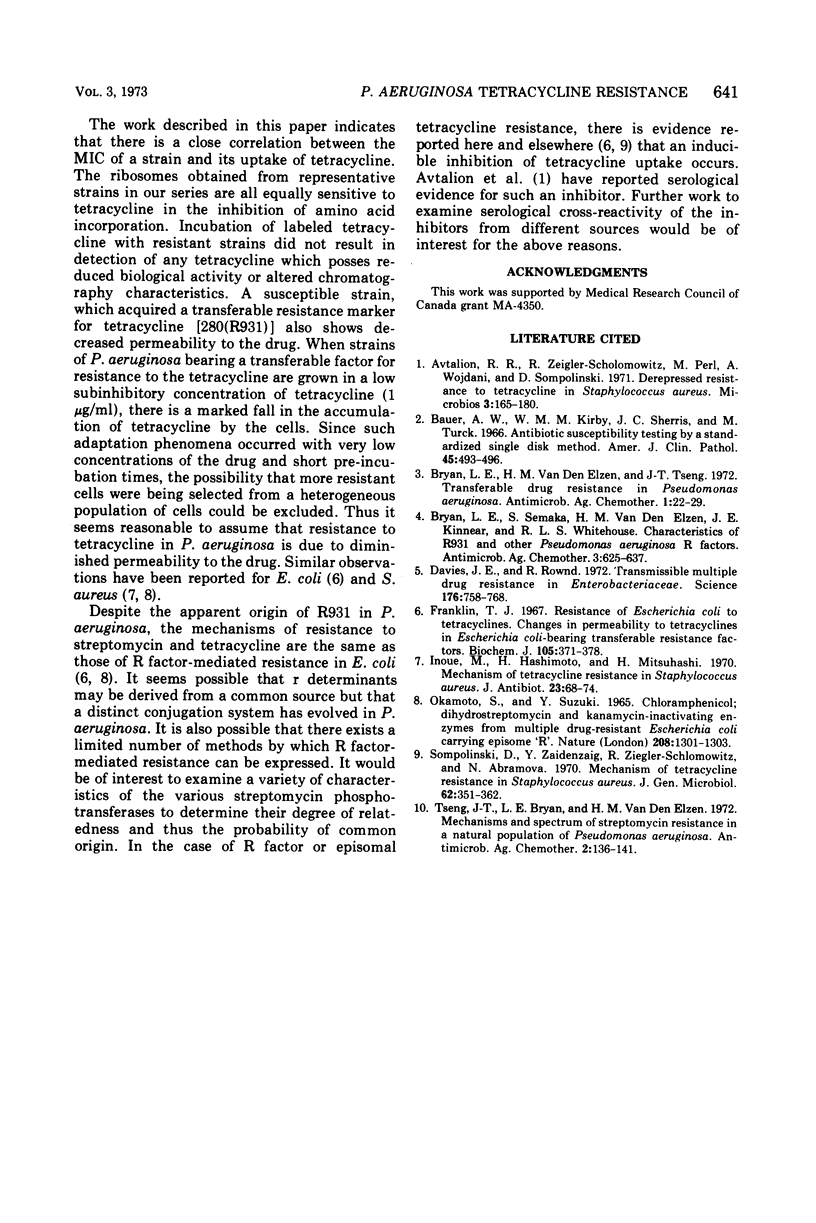Abstract
The mechanism of tetracycline resistance mediated by R931 (a Pseudomonas aeruginosa R factor not yet successfully transferred to Escherichia coli recipients) was examined. In strain 931 (R931) (minimal inhibitory concentration [MIC] 200 μg/ml) significant tetracycline uptake did not occur until 100 μg of tetracycline per ml was included in uptake studies. The introduction of R931 into strain 280 resulted in a significant decline in 3H-tetracycline uptake. In both strains 931 (R931) and 280 (R931), a further reduction in tetracycline uptake resulted from pre-incubation with 1 μg of tetracycline per ml. Tetracycline resistance in R−P. aeruginosa strains 1731, 1885, and 494, considered to be of chromosomal origin, was associated with a lack of tetracycline uptake until the MIC of the strain was obtained. No evidence of tetracycline inactivation or ribosomal resistance was detected in R− or R+ strains. The MIC for R− strains was generally about 25 μg/ml and that for R+ strains was 75 to 200 μg/ml.
Full text
PDF



Selected References
These references are in PubMed. This may not be the complete list of references from this article.
- Avtalion R. R., Ziegler-Schlomowitz R., Pearl M., Wojdani A., Sompolinsky D. Depressed resistance to tetracycline in Staphylococcus aureus. Microbios. 1971 Mar;3(10):165–180. [PubMed] [Google Scholar]
- Bauer A. W., Kirby W. M., Sherris J. C., Turck M. Antibiotic susceptibility testing by a standardized single disk method. Am J Clin Pathol. 1966 Apr;45(4):493–496. [PubMed] [Google Scholar]
- Bryan L. E., Van Den Elzen H. M., Tseng J. T. Transferable drug resistance in Pseudomonas aeruginosa. Antimicrob Agents Chemother. 1972 Jan;1(1):22–29. doi: 10.1128/aac.1.1.22. [DOI] [PMC free article] [PubMed] [Google Scholar]
- Davies J. E., Rownd R. Transmissible multiple drug resistance in Enterobacteriaceae. Science. 1972 May 19;176(4036):758–768. doi: 10.1126/science.176.4036.758. [DOI] [PubMed] [Google Scholar]
- Franklin T. J. Resistance of Escherichia coli to tetracyclines. Changes in permeability to tetracyclines in Escherichia coli bearing transferable resistance factors. Biochem J. 1967 Oct;105(1):371–378. doi: 10.1042/bj1050371. [DOI] [PMC free article] [PubMed] [Google Scholar]
- Inoue M., Hashimoto H., Mitsuhashi S. Mechanism of tetracycline resistance in Staphylococcus aureus. I. Inducible resistance to tetracycline. J Antibiot (Tokyo) 1970 Feb;23(2):68–74. doi: 10.7164/antibiotics.23.68. [DOI] [PubMed] [Google Scholar]
- Okamoto S., Suzuki Y. Chloramphenicol-, dihydrostreptomycin-, and kanamycin-inactivating enzymes from multiple drug-resistant Escherichia coli carrying episome 'R'. Nature. 1965 Dec 25;208(5017):1301–1303. doi: 10.1038/2081301a0. [DOI] [PubMed] [Google Scholar]
- Sompolinsky D., Zaidenzaig Y., Ziegler-Schlomowitz R., Abramova N. Mechanism of tetracycline resistance in Staphylococcus aureus. J Gen Microbiol. 1970 Aug;62(3):351–362. doi: 10.1099/00221287-62-3-351. [DOI] [PubMed] [Google Scholar]
- Tseng J. T., Bryan L. E., Van den Elzen H. M. Mechanisms and spectrum of streptomycin resistance in a natural population of Pseudomonas aeruginosa. Antimicrob Agents Chemother. 1972 Sep;2(3):136–141. doi: 10.1128/aac.2.3.136. [DOI] [PMC free article] [PubMed] [Google Scholar]


